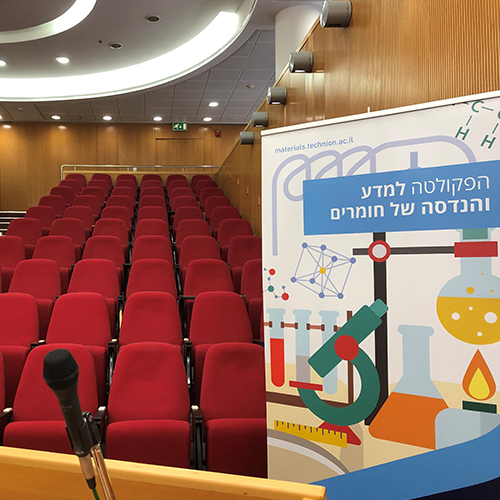
Prof. Melissa K Santala
23/02/2023
David Wang Auditorium, 3rd floor Dalia Meidan Bldg.
14:30
Metal nanoparticles (NPs) supported on metal-oxides play a critical role industrial catalytic processes. The activity and selectivity of NPs used in catalysis depends on their size, shape, and interactions with the oxide support. In this work, transmission electron microscopy (TEM) characterization of a model system are used to guide and validate density functional theory (DFT) based models of the Pt/gamma-alumina interfaces. Pt NPs were formed in dense alumina through solid-state precipitation into sapphire partially amorphized by ion implantation of Pt. Thermal annealing crystallizes the amorphized alumina as a gamma alumina and precipitates Pt NPs, which are mainly bound by {111} facets. Atomic-resolution scanning TEM images of Pt/gamma-alumina interfaces are compared to a DFT-based model of interfaces with different chemical terminations (O, Al1, Al2) of the alumina. The O-terminated interface model provides the best structural match to experiments and is predicted to be the most stable for the processing conditions used, based on thermodynamic calculations of the interfacial energy as a function of temperature and oxygen partial pressure. However, the model fits poorly beyond the third atomic layer of alumina. This is attributed to compromises in the model made to limit the computational time required for the calculations.
For comparison, similar work on Pt in theta-alumina (which is similar to gamma-alumina, but more amenable to DFT) will be described. This works furthers the understanding the accuracy and limits of models of gamma-alumina and Pt/alumina interfaces.


